#nomadic tribe
Explore tagged Tumblr posts
Text
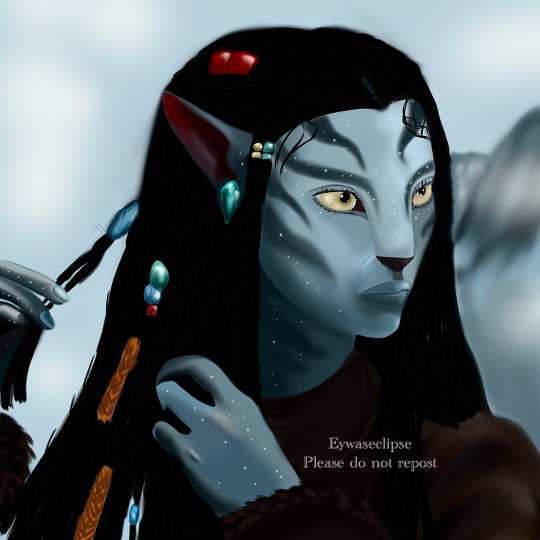
A beautiful mountain clan Na’vi inspired by the nomadic Tibetan tribe I was reading about the other day. I felt very inspired and here’s a little bit about them
“The nomadic herding tribes that live here are known for the unique traditional style of 108 Braids, a reference to the 108 holy volumes of Tibetan Buddhism.
Once used as a form of communication—to share one’s relationship status or religious affiliation—108 Braids is now also a tribute to the region’s heritage. Once braided, hair is adorned with all manner of earthy ornaments, like pine cones, coral, and turquoise, each woven into the braids to denote a milestone in life.” Vogue
Photographed by Kin Chan Coedel
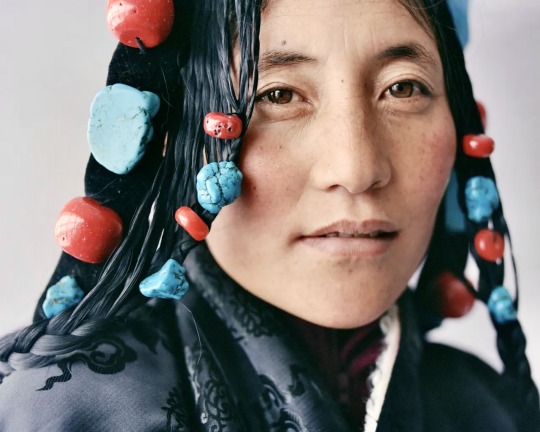
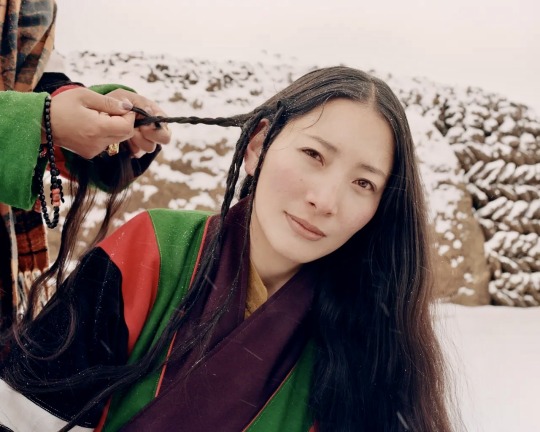
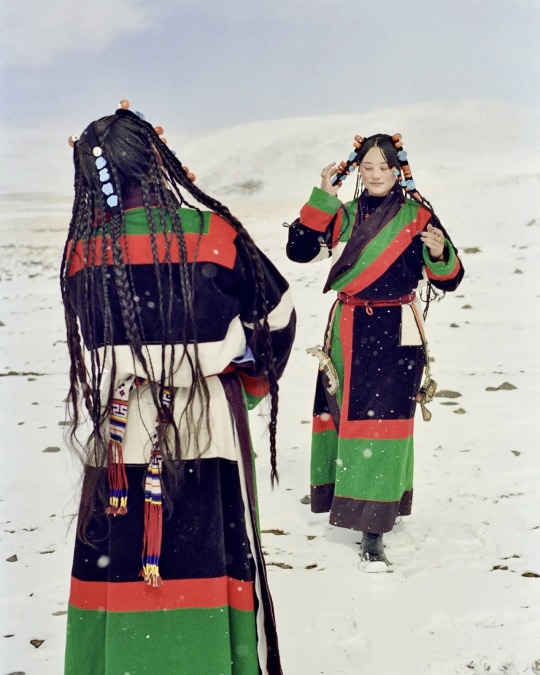



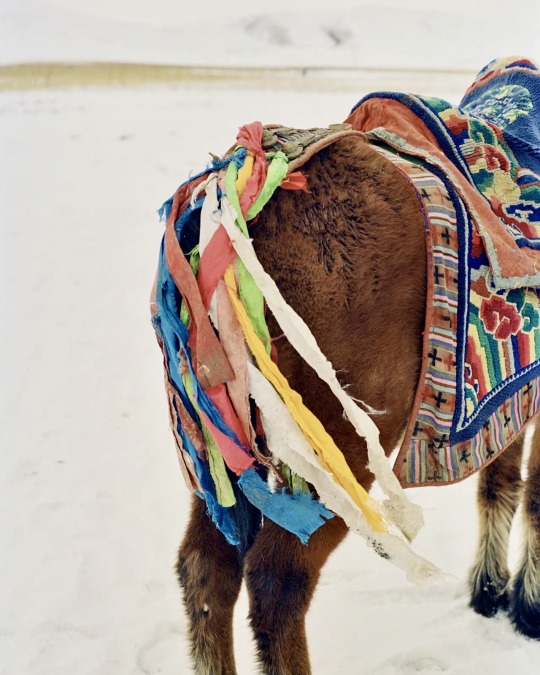
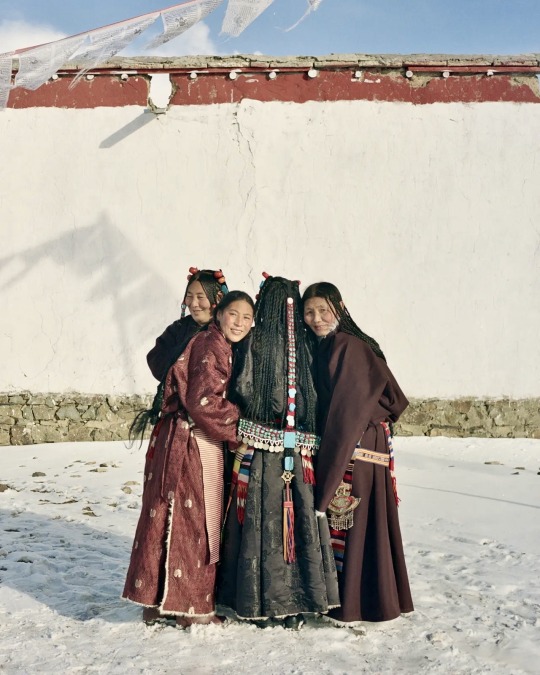
https://www.vogue.com/article/global-women-tibetan-braids
#mine#avatar edits#avatar explore page#avatar for you#new avatar blog#avatar the way of water#avatar 2009#new avatar writer#new writer#new blog#avatar art#my art#fan clan#avatar na’vi#na’vi art#oc art#oc na’vi#art#art of tumblr#avatar community#avatar fyp#avatar world building#tibetan buddhism#nomadic tribe#I love seeing how sacred hair is in other cultures#it connects us to our crowns#to our literal roots#it’s so symbolic in many ways#which I love about our avatar world too#everything is all connected it’s so beautiful and poetic James really cooked on that one lol
27 notes
·
View notes
Text
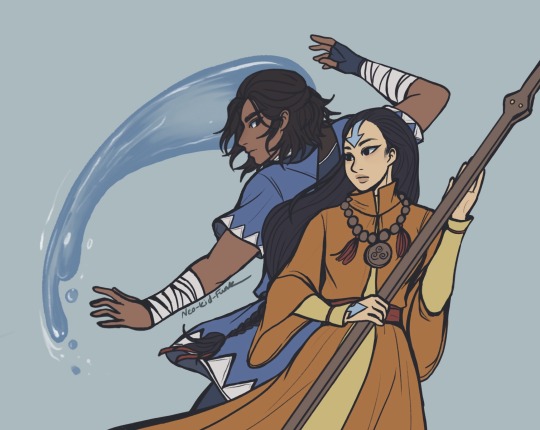
Them😵💫🤧
(Yall should read the Yangchen novels)
#yangvik#avatar yangchen#kavik#my art#digital art#avatar the last airbender#atla#legend of korra#lok#dawn of yangchen#legacy of yangchen#chronicles of the avatar#water tribe#waterbending#air nomads#airbending#avatar books
427 notes
·
View notes
Text
What's in a Name: Fake Name Edition
I thought it'd be be fun to cover the silly pseudonyms that the characters have used in the show.
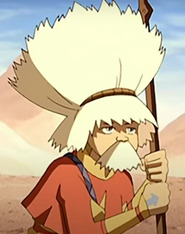
Bonzu Pippinpaddleopsicopolis - Buddhist Monk (房主) in Medieval Japanese... Pippinpaddleopsicopolis. Very subtle, Aang. ;)
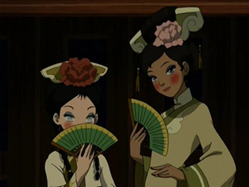
Hua Mei - Beautiful flower (花美) in Mandarin Chinese. The name becomes hilarious when you consider that Katara chose the word Dung for Toph's pseudonym right afterwards.
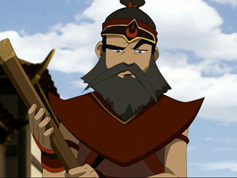
Wang Fire - Literally the most common surname in China (王)... Fire.

Lee - Literally the second most common surname in China (李).
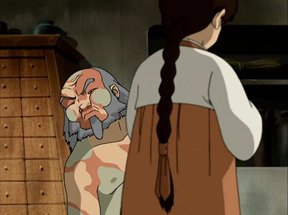
Mushi - Bug in Japanese (虫). Poor Iroh.
All in all, Katara and Zuko are both terrible at naming people on the spot.
#atla#avatar#avatar the last airbender#water tribe#earth kingdom#fire nation#air nomads#It feels like forever since I posted something light hearted#Did you guys know there's an old one-shot Avatar comic where Sokka enlists in the Fire Nation military for a day to gather information?#It's called Private Fire#Sokka and his dick jokes man#what's in a name
405 notes
·
View notes
Text
racism in star wars will have wikis saying shit like "this species that is inspired on a real life non-white people is just too stupid to use the Force"
#hm i should make an original post tag#yes this is about tuskens#they 'lack mental capacity' to be jedi. according to some writer#which is fucking ridiculous#they have enough mental capacity to have two languages (spoken tusken and tusken sign language)#(they are usually seen being used together but they can be used independently)#just because they're nomadic and hostile to colonizers doesn't mean they're stupid. or lack the nuance to understand good and evil.#in me opinion there may not be any tusken jedi but for the same reason there's no bardottan jedi - they have their own force culture#they are hostile to outsiders and defensive of their people‚ of course they wouldn't let some foreign order take their children away#i think a force-sensitive tusken would be highly regarded in their tribe. being one with the universe is a special privilege.
687 notes
·
View notes
Text
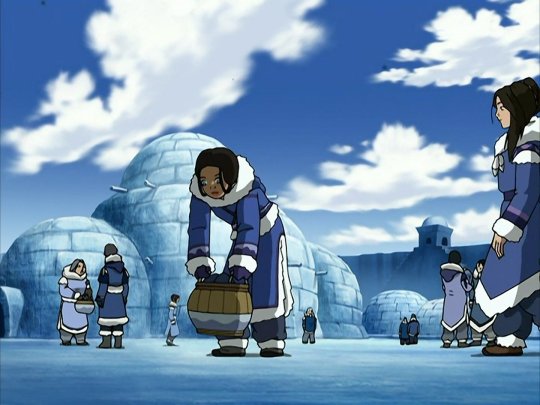
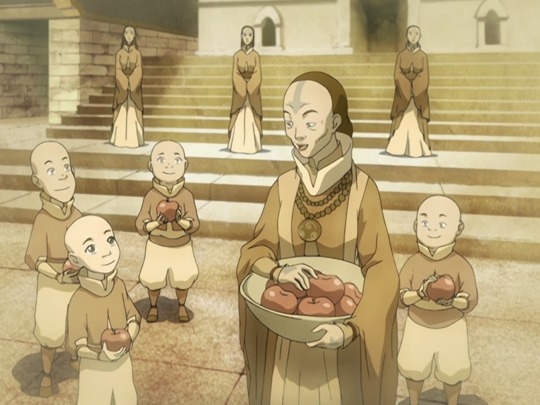

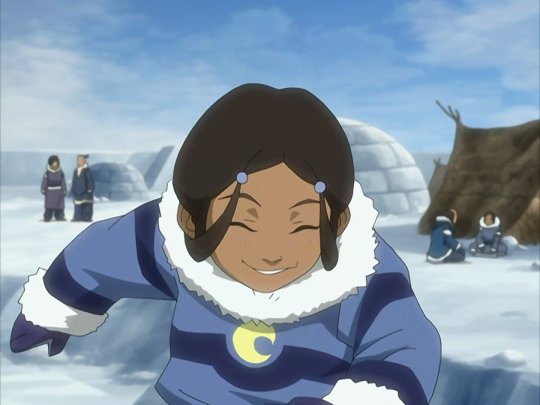
"Everything Changed When the Fire Nation Attacked"
#avatar the last airbender#atla#aang#katara#kataang#air nomads#south water tribe#goodbye world#they deserved better
184 notes
·
View notes
Text
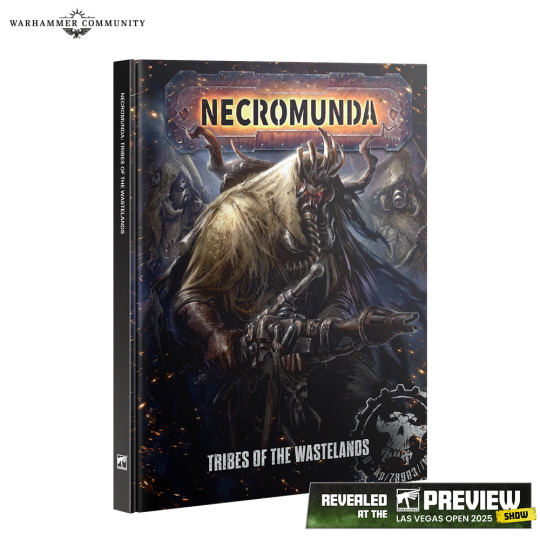





Just when you thought it was safe to go back into the ash wastes.
#games workshop#citadel miniatures#warhammer 40k#necromunda#ash wastes#ash waste nomads#sha'dar hunters#arthromite spinewyrms#tribes of the wastelands#las vegas open#lvo#warhammer community
88 notes
·
View notes
Text
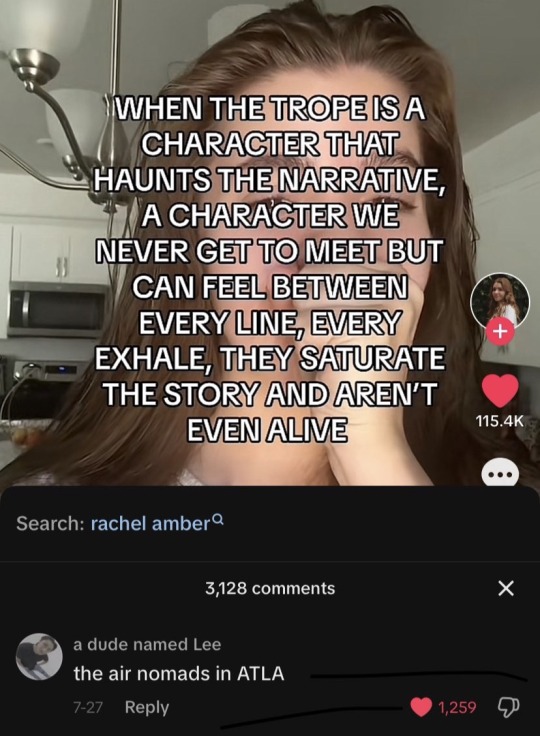
THIS 😔
#anime#animation#atla#avatar the last airbender#tlok#the legend of korra#aang#avatar aang#fire nation#earth kingdom#air nomads#water tribe#atla sokka#katara#prince zuko#zuko#kataang
117 notes
·
View notes
Text
Avatarverse Worldbuilding Concept:
What if the reason why the world of Avatar is so mish-mash in terms of culture is because during those years prior and during the process of unification of the Four Nations, alot of existing cultures continued to exist and persist in various spots among the nations?
What I mean by this is that numerous aspects of East Asian cultures (mainly China and Japan/Imperial Japan) existing primarily in areas of the Fire Nation and Earth Kingdom could be the result of trade and migration — thus leading to major cultural exchanges between nations, and possibly certain aspects engraining itself into the nations’ way of living.
For instance, Kyoshi Island.

(image resource)
Kyoshi Island is most notable in its Ainu influences regarding the fashion of its residents. Quoted from a post by /@atlaculture (who’s going to be a large source for this post), they stated the following:
“The Ainu (アイヌ) are an East Asian ethnic group indigenous to Hokkaido (the northernmost island of Japan) and the Eastern Russian islands of Sakhalin and Kuril...Kyoshi Island exists in close proximity to the Southern Water Tribe, having their inspiration be the Ainu, whose islands are in close proximity to the Yupik and Inupiat peoples of the Bering Strait…”
Going off from this information, there’s two things that come to mind.
Since the Ainu is an ethnic group indigenous to Hokkaido — a northern island of Japan— neighboring with islands that also home other ethnic groups such as the Yupik and Inupiat people, this can offer an interesting concept that can add onto the Avatar world—
What if the ancestors of those born in Kyoshi Island consisted of a mixture between earth kingdom residents, & settlers from both from the Fire Nation and the Southern Water Tribe?
And since we don’t see it too often within the EK or other nations, aspects of South East Asian cultures could also be apart of cultures that exists within the islands of the Fire Nation — which can give the idea that those cultural influences could have originated from certain areas of FN for most of the time (unless I might of missed smth whenever I thought about the EK).
And the reason why the FN seems to lean more towards the ideas of Japanese, and the Earth Kingdom seems to lean more towards Chinese influences (at least, among major towns, groups, and cities such as Gaoling and Ba Sing Se), this could be because of cultural trends that had to the prominence of said ideas.
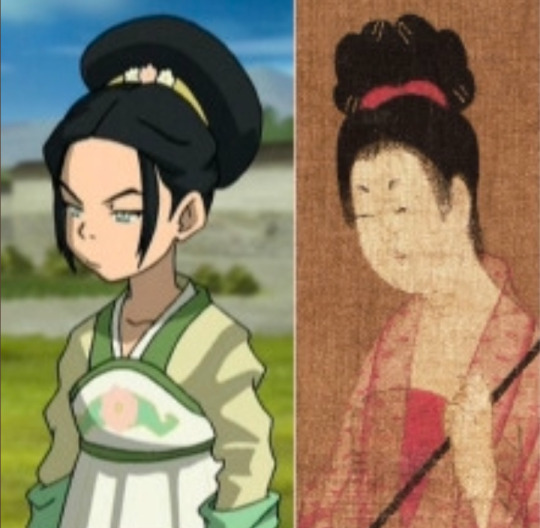

(Shown here is Toph wearing a Hanfu outfit from the Tang Dynasty & Azula wearing a Southeast Asian garb reminiscent of Cambodian/Khmer fashion).
Furthermore, another idea I have in mind is why the Northern Water Tribe is different — visually speaking — compared to the Southern Water Tribe. Cultural values and traditions aside, the NWT seems to lean a bit less towards Inuit-inspired influences, and more so towards various of other cultures. While the Inuit influences still exist, there also appears to be a mixture of Mongolian influences, as well as hints of other cultures in it as well.
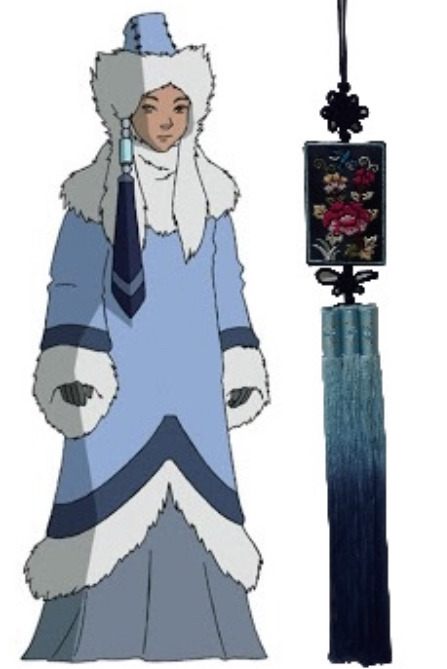
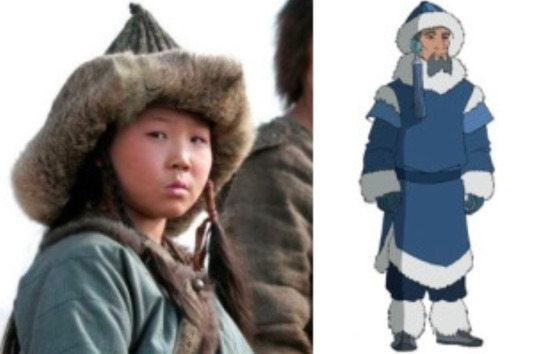
(image resources)
Here in the images shown are examples of the misc. cultural influences within the NWT. In the left image shows a background NWT character wearing a tassel that is crossover between a Korean norigae (a decorative pendant/good-luck charm) and a traditional Korean hair ribbon known as a daenggi. In the right is another background NWT character wearing a hat that’s reminiscent of a Mongolian hat. I’ve also seen alot of people telling about the more Siberian influences the NWT has as well.
Personally, I like to think the reason the NWT may have these differentiating influences could be partially due to cultural exchanging/mixing with neighboring Northern regions of the Earth Kingdom.
(side note: shoutout to @atlaculture for the wonderful resources and explanations on the world of ATLA that inspired me to make this post :3! I highly suggest checking out their blog if you’re interested in learning more about the cultural influences found within Avatar!)
#atla#avatar the last airbender#avatar#tlok#lok#the legend of korra#legend of korra#avatar the legend of korra#earth kingdom#fire nation#water tribes#air nomads#atla meta#aang#korra#roku#kyoshi#yangchen#kuruk#toph beifong#toph#azula
68 notes
·
View notes
Text
The fire nation is actually the least likely nation to be homophobic and the fact that it is canonically the only homophobic nation is a bunch of bull, driven by the idea that bad is bad is bad and we must have only negative things in the fire nation and the other nations are hapless uwu victims. God forbid we have some awareness that cultures can be problematic in different ways.
Also easily none of the nations could be homophobic, or all of them are to varying degrees, but if only ONE nation is homophobic it is NOT going to be the fire nation and here's why.
Air Nomads
Look these guys are just as likely to be homophobic as not actually. Like clearly they're all monks, but that could go one of two ways. You're either a love is love monk, or a sex is sinful monk, and the fact that the monks were separated by gender into different temples and they presumably only had sex to have children so they wouldn't die out, I'm leaning towards the "sex is a tool to create children, to do it for other reasons is to indulge your carnal urges" type monks.
And when two men or two women have sex, it's not to create children.
Therefore, pretty solid that while the air nomads probably don't hate gay people, I don't think it was really an accepted thing in their society just because no romantic/sexual relationship was really accepted within the monk lifestyle. So not homophobic, but not really a thing.
2. Southern Water Tribe
You're gonna look me in the eyes and tell me that a nation with such emphasis on gender roles isn't gonna be hella weird about gay people? The men go off to war, the women stay and mend. Sokka's sexism, although I do think there's an argument that he took it further than his society taught him (because he was overcompensating, as the only man left in the village) was clearly taught to him.
That being said it's a society in which men leave on long journeys for days or weeks at a time and leave their wives at home, so I wouldn't be surprised if homosexuality was common but not discussed. You get a boat husband, yall keep each other company during long voyages while both your wives are gone. The ladies meet up for "sewing circles" while the men are off doing their thing. It's something that happens, but even if you do indulge it's with the understanding that when you get back to the village or your spouse comes back from the hunt you two are married and whatever happened when you were separated is not discussed.
Open homesexuality in such a culture? Can you imagine? Absolutely not.
3. Northern Water Tribe
Again, super gendered society. Women are literally treated like property and supports to be used by men, not allowed to speak in political situations, etc.
The reason I separate the southern and nothern is that their way of living is so different that my conclusion is different as well.
The northern water tribe is far more sexist (southern, we see that gran gran is respected as an elder at least and her words are taken seriously) AND they don't have the same previously mentioned long trips in which the men and women are separated.
Therefore I don't think homosexuality is even okay as a silent, not-talked-about but generally accepted part of society. These guys would absolutely make laws against it.
4. Earth Kingdom
Initially similar problems to the water tribe. They're clearly a very gendered society, only men join the army from what we've seen, the women are at the very least encouraged to be pretty and silent, especially in higher social statuses. In a society that emphasizes the respective places of women and men so much, homosexuality is less likely to be accepted because it necessarily destroys those roles (hence the "okay but who's the man in your relationship" type questions--because people obsessed with gendered society cannot fathom the idea that a relationship can consist of two people not fulfilling the specific roles of "man" and "woman")
Similarly to the Northern Water Tribe, they also don't have the situations in which men and women are often separated for long periods of time. Plus just given the generally rigid, headstrong nature of earth benders as a whole combined with the sexist nature of their general social strata, I just don't think they're going to be easily swayed to accept an alternative family structure than the one they have decided (a man protecting and providing for the family, a woman to care for the children, and their children).
Clearly the earth nation is extremely large and there is a lot of variation between the sections of any society, so I don't doubt there are many places (especially further-removed locations that aren't so under the direct sway of the aforementioned nobility) where homosexuality is accepted even openly, but we're talking about the general societal attitude, not exceptions to the rule.
(This being said Omashu is not homophobic no matter how homophobic the rest of the earth kingdom is because I refuse to believe Bumi wouldn't immediately repeal any homophobic laws the moment he became king)
5. Fire Nation
The Fire Nation is the most equal society in terms of gender norms. This is the only nation that has just as many women as men in the military, and in political situations (although we see many of the higher ups are still men) women are allowed to have a place as well. No one objects to Azula being the next firelord on grounds of her being a woman, no one ever suggests that Azula, Mai, or Ty Lee don't know what they're doing because they're women or expresses surprise that a group of women took Ba Sing Se or whatever.
Now, in terms of accepted relationships I do agree that the nobility likely insist that their own children marry someone that they can have children with--because bloodlines are important in such a society, and royal matches have never been about love or attraction, they've been about making alliances and raising your social status and continuing bloodlines.
We don't see any evidence of harems in Avatar, but there are plenty of historical examples of a king marrying a woman to continue the bloodline and then having male concubines and such, which is what I would suggest as a reasonable way to portray this in the fire nation.
But generally speaking, to the common people, there is literally no reason for the fire nation to have a problem with homosexual relationships. In fact there are more positives than negatives to them, when you have both men and women as soldiers on your ships.
You can ban all sexual relationships in the hope that you can avoid your women soldiers getting pregnant, or you could turn a blind eye to gay relationships because guess what when you have lady soldiers that's a really great way to make sure no one gets pregnant while on really long assignments.
IN CONCLUSION
The reason the fire nation was said to be the only homophobic nation in the comics was plain and simple a "grr fire nation evil" mentality that didn't take into account any of the actual cultures presented, and people need to take into account that someone can be an evil rat bastard and not be homophobic, and there are bigger questions of society in play that you can't just say "oh they're evil and those guys are good so the first will be homophobic and the second wont"
See: Kaido from one piece as a great example of how a rat bastard is not homophobic or transphobic
#atla#avatar the last airbender#atla meta#complaintblog#fire nation#water tribe#earth kingdom#air nomads#give me some god damn depth of character
146 notes
·
View notes
Text

This has become the new fake video game quote that everyone thinks is real for some reason like that one Final Fantasy Tactics image.
#except this is even less believable because lyn never had a country#she was originally part of a nomadic tribe#and then became the marquess-daughter of caelin#a territory in the lycian league which is not a real ‘country’ but a confederation of allied territories
116 notes
·
View notes
Text

Love seeing their happy family
#katara#aang#kataang#avatar the last airbender#art#artist on tumblr#kataangtag#atla#atla fanart#atla fan art#avatar#katara avatar#aang x katara#digital art#air nomads#southern water tribe#bumi ii#bumi atla#bumi lok#bumi tlok#bumi#lok#korra#legend of korra#kataang fanart#kataang family#pro katara#pro aang#my art#leantailean art
340 notes
·
View notes
Note
how do you think the calendar is organized in the atla universe? they have a twelve-month system like we do but what would those months each be called? do you think they have leap years?
Right off the bat, let me just say that hypothetical calendars and alternative timekeeping is one of my favorite topics to talk about so this reply is going to be lengthy.
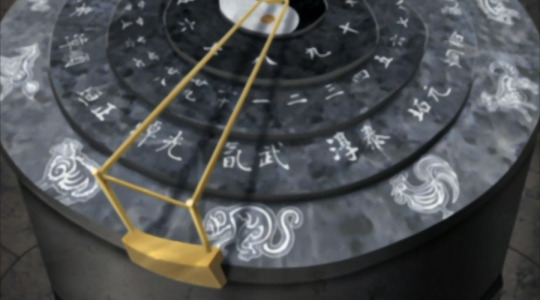
First off, everything we know about the calendar system in Avatar comes from the planetary calendar room in Wan Shi Tong's library.
The innermost ring indicates the number of months in a year (12), the second ring indicates the number of days in a month (30), the third ring indicates the different Avatar eras (16 shown), and the outermost ring showcases all of the animals of the zodiac cycle (12). For this reply, we're only going to be focusing on the innermost and second innermost rings.
According to the episode, the ATLAverse appears to have only 12-month years, so no leap year 13th month like the East Asian lunar calendar. There also doesn't appear to be any months with more than 30 days, judging by the number of days shown on the calendar. This means that the maximum number of possible days for an Avatar year is 360. So it's safe to say that there are probably no leap years like ours in the ATLAverse. I guess their Earth's orbit is slightly shorter and more suited for timekeeping than ours.
As for what each month would be called in the ATLAverse, there's a couple of options. One option is to simply call the months by order: First month, second month, third month, etc. This actually ties back to Avatar's Chinese influence, as that's literally how months are named in Mandarin. This is straightforward, practical, and doesn't require any complex etymology or extensive worldbuilding.
However, I also think it would be fun to weave motifs into the calendar. Since there's so much emphasis on balance and cycles, why not divide the twelve months between the four elements? I imagine these months would be referred to as:
The 1st, 2nd, & 3rd Water Month
The 1st, 2nd & 3rd Earth Month
The 1st, 2nd, & 3rd Fire Month
The 1st, 2nd, & 3rd Air Month
For example, a person might say "I was born during the first water month, in the year of the rabbit." Naturally, there would be plenty of superstitions and horoscopes related to the combination of birth month and birth year.
The show also canonically mentions weeks passing by, although they never specify the number of days in their weeks. In a previous post, I mentioned that government officials during the Qin & Han Dynasty were given a day off every five days to bathe themselves. I think this would be a good basis for a week in the ATLAverse, four days of work and one day of rest. Each working day would be named after a cardinal direction (East-day, North-day, West-day, South-day) and the resting day would be called "Center-day", paralleling a compass.
In short, an ATLA month would be comprised of 6 five-day weeks and a year would be made up of 12 thirty-day months; the days would be themed around the cardinal directions and the months would be themed around the four elements. I think this would be a good way of adding texture to the world of Avatar, without weighing the setting down with too much worldbuilding or cultural baggage.
...And that would just be the default "world" calendar that spirit libraries and world travelers and international organizations would use. I think each nation would probably have their own unique calendar tailored to suit their own cultural and seasonal needs.
I might make a few posts on what each nation's calendar system might be, if anyone would like to read that.
Like what I’m doing? Tips always appreciated, never expected. ^_^
https://ko-fi.com/atlaculture
#replies#avatar#atla#avatar the last airbender#water tribe#earth kingdom#fire nation#air nomad#cultural calendars
499 notes
·
View notes
Text
Here's an interesting question to any Avatar fans who follow my blog or just see this post: If there was fifth Elemental society in the world of Avatar, what do you think their element would be, what might their bending style be (the type of fighting style their bending would be based on i mean) and would you see their society being like?
#Avatarverse#avatar: the last airbender#Avatar#avatar: the legend of korra#Lok#ATLA#air nomads#Fire Nation#Water tribe#Earth Kingdom#Aang#Korra#Zuko#Asami#Katara#Air nation
35 notes
·
View notes
Text
A reminder that Aang built a temple with houses in it, which belongs to both his culture AND Katara's culture :) Their house has air nomads and water tribe belongings in every corner and rooms <3
A reminder that they are wearing each other's colors in this official pic
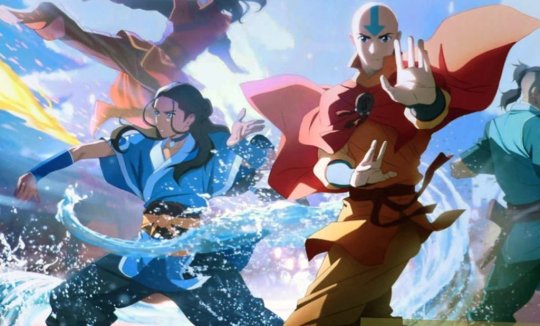
Oh their scenes in the movie are gonna be SO GOOD ❤
#avatar the last airbender#atla#aang#katara#kataang#atla movie#water tribe#air nomads#the new edits we are getting soon#we are eating so good
203 notes
·
View notes
Text
I have a lot headcanons, okay?? Including extra kids for aang. And this is one of them. His second oldest, Yelaan.

They're southern water tribe and air nomad :)
On the left you got her air nomad clothes, on the left their casual clothes
- she/they
- they take up a spiritual role in the tribe
- they are more in touch with their water tribe culture (including religiously, for the most part. They are not vegetarian)
- they are a water bender
- they're lesbian
- they are close friends with Sakari
- they think of akiak like an annoying little brother
Their older brother, bumi
Their younger brother, tenzin
#nonbinary oc!#atla fanart#avatar the last airbender#atla next gen is my most severe brainrot#atla next gen#aangs kids lol#gaangs kids#water tribe#air nomads#atla oc#waterbender#i fucking love this design so much im gonna be real#my art#the yikes au
124 notes
·
View notes
Note
I didn't know Katara also had silver marks on the Kintsugi AU. How did you come up with that idea? Is it an in-universe cultural thing? If it is, is it exactly the same as Zuko's or does the Water Tribe have their own beliefs around it?
Sorry if I'm asking too many questions, I just really love how your mind works when it comes to these AUs 💖
Hello, and thanks for asking!
Initially, Kintsugi was a strictly Fire Nation tradition. Something to hold over the rest of the nations, and deepen their own belief of cultural superiority. Zuko hiding his scars played into that idea, since having gold inlaid in your body is a clear sign of Fire Nation blood—furthermore, High Fire Nation blood.
That being said, one lovely anon gave the suggestion that perhaps the other nations also have their own kinds of Kintsugi, and I fell in love with the idea. @ican-fixitbooks went even deeper into the particular philosophies of each nation regarding Kintsugi. I'll be using some quotes from them—watch for the italics.
It was during said brainstorming session that I thought of Katara having a silver Kintsugi scar, and how could it be used to enhance the themes of ATLA, Katara's arc, and this AU as a whole.
But a little background is necessary, I believe.
Kintsugi is a tradition practiced worldwide, with minor differences in philosophy/technique according to each nation.
The Earth Kingdom seal their scars with a substance that resembles bronze, as the mentality of breaking yourself down to build yourself back up better than you were is very central to their culture. It is used as a way to celebrate one's victories, made all the better if damage was taken to achieve it.
The elite have rather different views on this practice. They believe themselves to be above such things. That which is broken must be hidden away, which has interesting connotations when thinking about a certain blind earthbender.
The Air Nomad philosophy leans towards a naturalist approach. Anything natural doesn't need to be "improved" in their eyes. If a scar is there, it is there. Let it be there as a part of you, no different than any other, no need to be "made better", but in fact better to just "be".
Kintsugi is a cultural practice meant to celebrate making something beautiful out of something broken, arguably even making it better than it was. During Sozin's reign and forward, Kintsugi became a way to show the Fire Nation's superiority. Especially as that is essentially their philosophy for war: "Breaking the rest of the world so it can be reforged in fire, made a better, more perfect place."
As for the Water Tribes, there's the healing factor to take into account. The Northern Water Tribe isolated itself from the rest of the world once the war began, so they hold tight to their traditions and beliefs. If something is not broken, then why attempt to fix it? Kintsugi is scoffed at in the North—it is a foreign practice, one that is not necessary when all your wounds can be healed with bending.
However, the Southern Water Tribe has been exposed to the world. They have seen war. They have lived through it. They have suffered, but they are also free because of it, if only in spirit. The South is strong and proud and bold, so it comes as no surprise that silver Kintsugi becomes the mark of their warriors, their hunters, their people.
Katara was wounded during the last Southern Raid. After losing Kya in such a terrible way, Hakoda made sure to seal Katara's wound with the silver of their warriors, so that she would always remember that despite having been broken, she is still strong, beautiful, and proud.
The scar itself is long and thin, going from her right shoulder up to her jaw. It loosely resembles lightning.
And despite how she got it, despite all the things she lost on that day, despite it being a constant reminder of her mother's death—Katara loves her scar.
It grounds her. It pushes her forward. You are a warrior, it tells her. You are a survivor.
When Katara arrives at the North, her scar becomes yet another thing the Northerners hold against her. They use it to demean her, just as they do her gender and out-spoken personality.
The North believes a lot of things that Katara always considered natural to be a problem. What does it matter that she is a woman? What is wrong about being passionate? Why should having a scar mean she's broken?
This scar is something they cannot touch. The Northerners try to use it to demean her. To make her small. Self-conscious. Worthless.
They're scoffing at her mother's death.
Her strength.
Her beauty.
Her pride.
Her story.
And she will not allow it.
#dema answers#atla#avatar the last airbender#katara#zutara au#zutara#kintsugi au#kintsugi#worldbuilding#atla au#earth kingdom#fire nation#air nomads#northern water tribe#southern water tribe#katara of the southern water tribe#atla headcanons#I'm sorry if I made this answer too long!#I highly appreciate all your suggestions and ideas regarding this (or any other) of my AUs#Keep them coming! Take the concept and explore it! Think of how it would affect the characters and arcs and worldbuilding!#And tell me all about it#Make art write fics brainstorm and share headcanons and little ideas for scenes or designs... I'll love them all#This AU is ours. It is yours. And it's precious because of it.#What do you think of Toph? Or Suki? What about Zuko or Azula?#(I did not mention Sokka for a reason)#(That anecdote with the two fish hooks? He tried to seal that wound with Kintsugi ALL BY HIMSELF and... It didn't go well)#(At all)#Thank you sweetie for asking!#And for loving this AU and wanting to know more ❤️#Kintsugi AU lore
130 notes
·
View notes